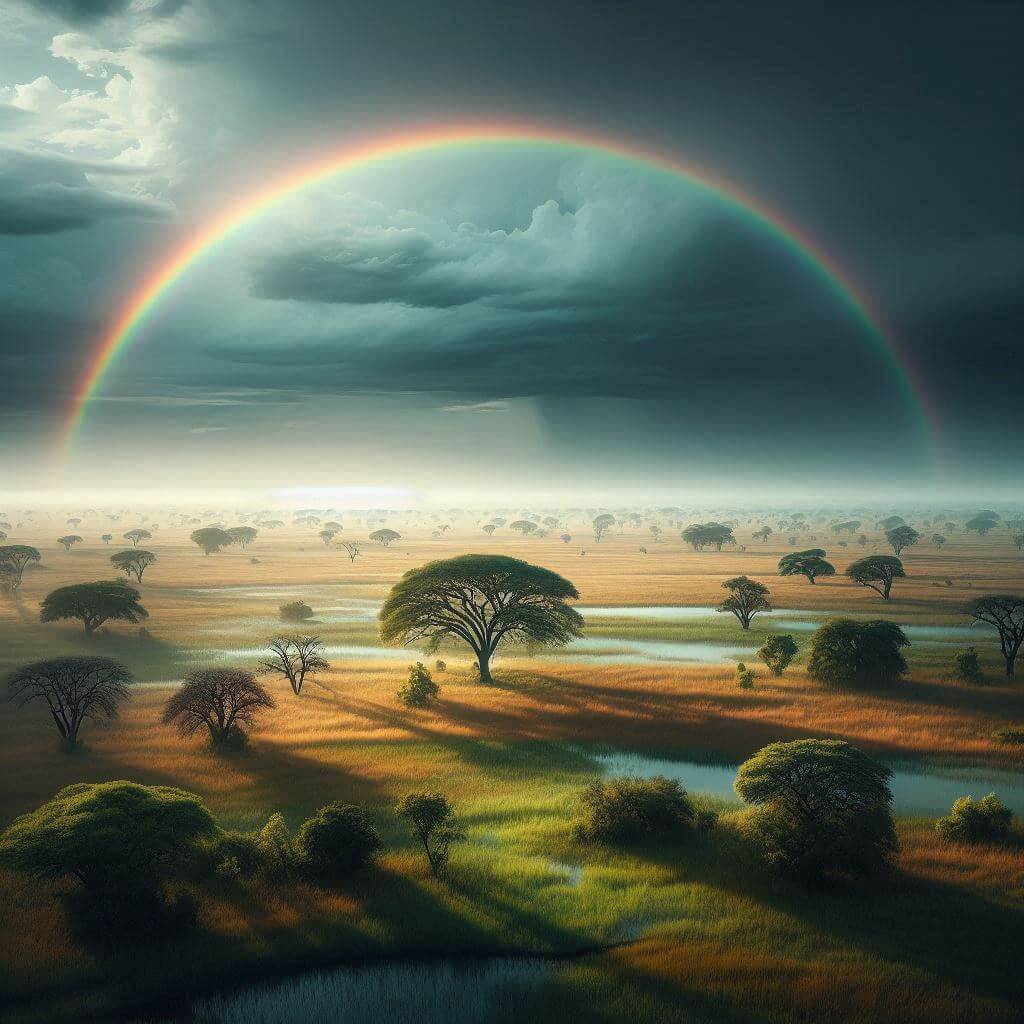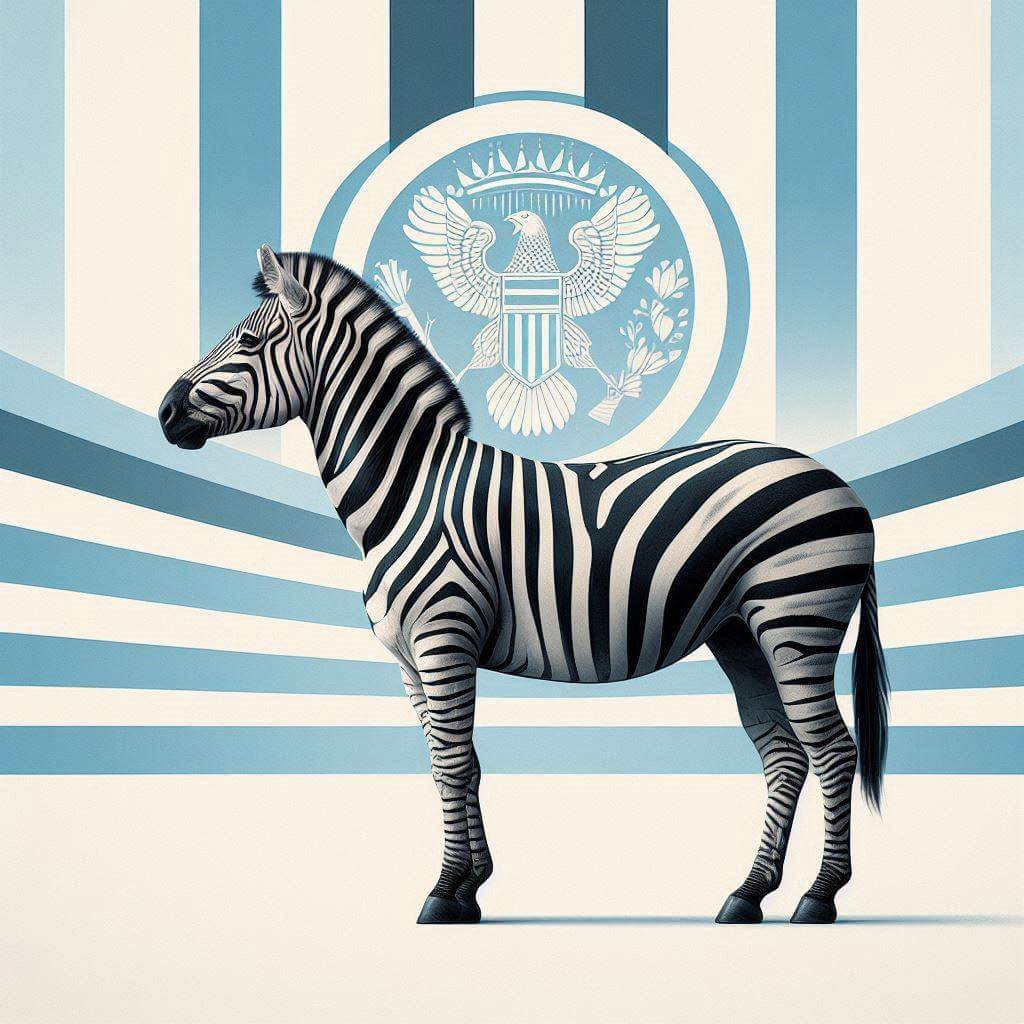The flag of Botswana features a light blue field bisected by a black horizontal stripe with white borders. This elegant and simple design reflects the country's peaceful nature, rich resources, and commitment to racial harmony and democracy.
| National Flag Day | September 30th |
| Sovereign state | Yes |
| Official name | Republic of Botswana |
| Capital | Gaborone |
| Population | 2,333,557 |
| Area | 581,730 km² |
| Currency | Botswana pula (BWP) |
| Language | English, Setswana |
| Continent | Africa |
| Region | Southern Africa |
| Subregion | Southern Africa |
| Borders | Namibia, South Africa, Zimbabwe |
| Timezone | Central African Time (CAT) UTC+2 |
| Calling code | +267 |
| Top-level domain | .bw |
History of the Botswana Flag
 The flag of Botswana was officially adopted on September 30, 1966, coinciding with the country's independence from British colonial rule. It was designed to represent the new nation's values, natural resources, and aspirations for the future.
The design was chosen through a national competition, reflecting Botswana's commitment to democratic processes from its earliest days as an independent nation. The winning design, created by a local artist, was selected for its simplicity and powerful symbolism.
Since its adoption, the flag has remained unchanged, symbolizing the stability and continuity that have characterized Botswana's political and social development since independence.
The flag of Botswana was officially adopted on September 30, 1966, coinciding with the country's independence from British colonial rule. It was designed to represent the new nation's values, natural resources, and aspirations for the future.
The design was chosen through a national competition, reflecting Botswana's commitment to democratic processes from its earliest days as an independent nation. The winning design, created by a local artist, was selected for its simplicity and powerful symbolism.
Since its adoption, the flag has remained unchanged, symbolizing the stability and continuity that have characterized Botswana's political and social development since independence.
Symbolism and Design of the Botswana Flag
Each element of the Botswana flag carries deep symbolic meaning:
- The light blue field represents water, specifically the rain that is vital for the semi-arid country. It also symbolizes the country's motto "Pula" (Rain), which is a traditional greeting and blessing in Botswana.
- The black horizontal stripe represents the racial harmony between black and white citizens, as well as the zebra, one of Botswana's national animals.
- The white borders of the black stripe symbolize peace and tranquility, values that Botswana has maintained since independence.
Usage and Significance of the Botswana Flag
 The flag of Botswana is a source of national pride and is prominently displayed throughout the country. It flies over government buildings, schools, and public spaces, and is featured during national celebrations and official ceremonies.
Botswana's flag plays a crucial role in representing the country internationally. It is displayed at diplomatic missions, international organizations, and during sporting events, symbolizing Botswana's presence on the global stage.
The flag serves as a constant reminder of Botswana's commitment to democracy, peaceful development, and racial harmony. It has become an important symbol of the country's success story, often cited as an example of political stability and economic growth in Africa.
The flag of Botswana is a source of national pride and is prominently displayed throughout the country. It flies over government buildings, schools, and public spaces, and is featured during national celebrations and official ceremonies.
Botswana's flag plays a crucial role in representing the country internationally. It is displayed at diplomatic missions, international organizations, and during sporting events, symbolizing Botswana's presence on the global stage.
The flag serves as a constant reminder of Botswana's commitment to democracy, peaceful development, and racial harmony. It has become an important symbol of the country's success story, often cited as an example of political stability and economic growth in Africa.
Interesting Facts About the Botswana Flag
- Botswana's flag is one of the few national flags that does not include the colors red, white, or green, setting it apart from many other African flags.
- The light blue color of the flag is sometimes referred to as "Botswana Blue" and has become closely associated with the country's identity.
- The flag's design has remained unchanged since its adoption in 1966, reflecting the country's political stability.
- The black and white stripes are sometimes interpreted as representing the zebra, which appears on Botswana's coat of arms and is an important symbol in the country's wildlife conservation efforts.
- Botswana celebrates its National Flag Day on September 30th each year, coinciding with the country's Independence Day.